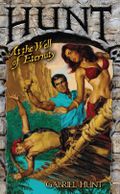I've been catching up on everything I missed while I was out-of-town and discovered some bloggers had some very nice things to say about my MONK books last week. The William-To-Jose blog liked MR. MONK GOES TO GERMANY:
What a pleasant surprise it turned out to be. This is a funny, funny book! Goldberg has a fantastic grasp of the characters and reading this was almost like watching the show. […]The book also has it's serious moments, however, especially when Monk has to confront certain truths he'd rather not. This grounds the book so it doesn't come off as pure fluff.
I agree with him about the importance of grounding Monk…of finding something with emotional stakes for him in every story…otherwise he'd just be a cartoon character.
Author Bill Crider enjoyed Monk's adventures in Germany, too.
The book reads smoothly and quickly, with plenty of laughs and a smile on every page. Which is quite an achievement, considering that Monk is in reality a sad case, a slave to his phobias and compulsions. Even Natalie loses control in this one, but to good effect. And at the end, well, she pulls quite a stunt. […] Sitting in hospital waiting rooms is no fun at all, but Mr. Monk Goes to Germany brightened my time in them this week, and it might brighten your day, too.
I don't think there's any greater compliment that a writer could get than hearing that his stories have made someone's day brighter…and helped them forget whatever woes they have, if only for a while. Thank you so much, Bill…and I hope your wife is feeling better.
Karen Rainey draws a distinction between between "derivative" books, which she doesn't like much, and tie-ins which, in the case of Monk, she likes a lot.
A derivative book is NOT a tie-in book such as Lee Goldberg’s Monk books. He’s contracted to write those books based on the television series. (By the way, he goes way beyond the television character arc in his books and they’re really good.)
She defines "derivative books" as ones in which an author continues the work of another, using the same characters, the same world, etc, like sequels to Jane Austen's books or "Gone with the Wind." She says:
A book ends when it ends. A book ends when the author thinks it’s right to end it. Would I like a different ending to Gone with the Wind? It’s not my call. It’s Margaret Mitchell’s work, not Karen Ranney’s. It’s my opinion that no one else has the right to come along and “borrow” those characters.
I'm sure there are plenty of fanfiction writers out there don't agree with her and they've probably let her know in the strongest possible terms. In their minds, tie-in writing is simply "paid fanfic." I'm not sure whether they truly don't understand the significant differences between tie-ins (which are the equivalent of being a freelance writer of an episode of a TV series) and fanfic (which is the equivalent of stealing someone else's work and putting your own name on it) or if they simply don't want to acknowledge it. But I've talked enough about that already.



